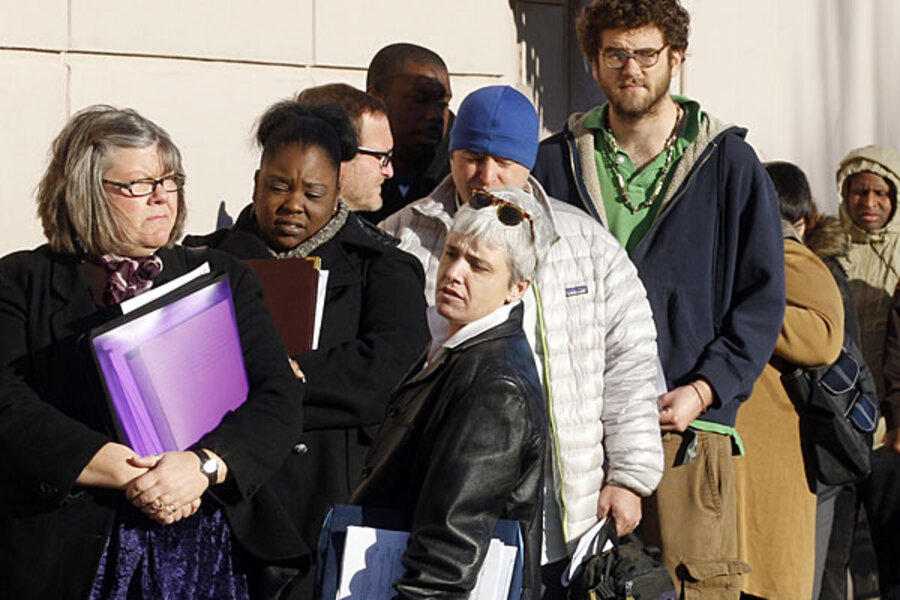Rebounding economy: Unemployment assistance drops to four-year low
Loading...
| Washington
The number of people seeking unemployment aid neared a four-year low last week, a positive sign that strong hiring could continue in the coming months.
The Labor Department said Thursday that weekly applications for unemployment benefits fell 15,000 to a seasonally adjusted 358,000. That's the second-lowest level since April 2008.
The four-week average, a less volatile measure, fell to 366,250, the lowest since late April 2008.
"The encouraging U.S. employment news continues," Jennifer Lee, an economist at BMO Capital Markets, wrote in a note to clients. The "job market started February off on a sturdy footing."
When applications fall consistently below 375,000, it generally signals that hiring is strong enough to lower the unemployment rate.
Employers added a net gain of 243,000 jobs in January, the biggest gain in nine months. The unemployment rate fell for the fifth straight month to 8.3 percent, the lowest in nearly three years.
From November through January, the economy has added an average of 201,000 net jobs per month.
The increased hiring in part reflects faster economic growth. The economy expanded at an annual rate of 2.8 percent in the final three months of last year — a full percentage point higher than the previous quarter.
Applications are also falling because companies are laying off fewer workers. A separate report from the Labor Department, released earlier this week, showed that job cuts have fallen below pre-recession levels. Layoffs dropped last year to the lowest annual total in the 10 years the government has tracked the data.
With job cuts low, even a modest increase in hiring results in net job gains.
The number of people receiving benefits edged up in the week ending Jan. 21, the latest data available. About 7.6 million people received unemployment aid that week, a slight increase from the previous week. That figure includes about 3.5 million people receiving extended unemployment benefits under an emergency program set up during the recession.
That program is set to expire at the end of this month, unless Congress agrees to extend it through the end of the year. Lawmakers are wrangling over how to pay for an extension of benefits and for an extension of a Social Security tax cut that is also set to expire at the end of this month.
Most economists expect growth will slow a bit in the January-March quarter, because companies won't need to rebuild their stockpiles of goods as much as they did in the winter.
But some economists are increasingly optimistic that the economy will steadily expand this year, given last month's unexpectedly large job gains and other positive signs.
U.S. manufacturing activity grew in January at the fastest pace in seven months. Americans are buying more cars and trucks. And consumers stepped up borrowing in November and December by the most in a decade, which could indicate they are growing more confident in the economy.
Still, the job market has a long way to go before it fully recovers from the damage of the Great Recession. Nearly 13 million people remain unemployed, and 8.3 percent unemployment is painfully high.
One reason the unemployment rate has fallen for five straight months is that many people have stopped looking for work. The government only counts people as unemployed if they are actively searching for a job.







